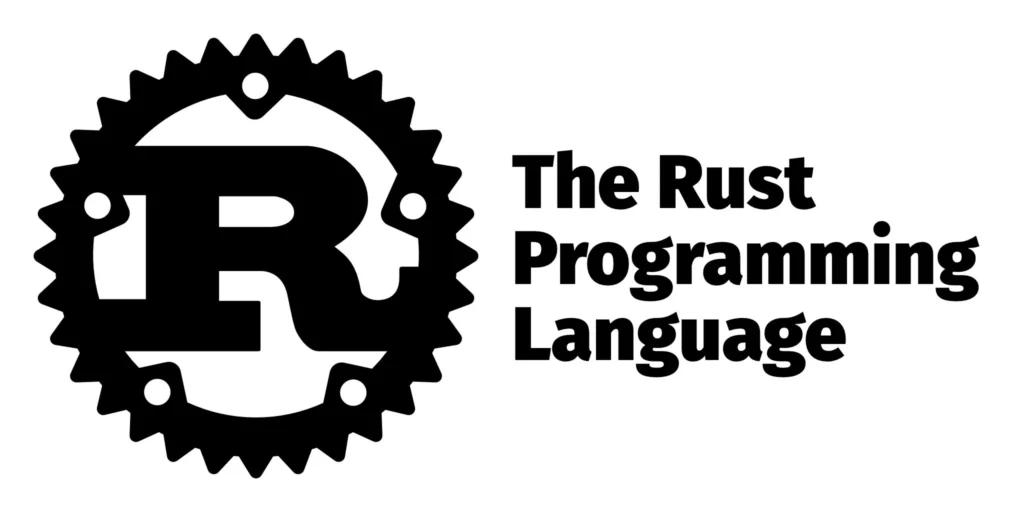Modern backend developers often compare Rust vs Go when selecting technologies for new systems. These languages have common objectives such as safe concurrency and high performance, whereas they have different trade-offs. Rust is highly optimized in terms of efficiency and safety, and relies on strict compile-time checking. Go focuses on minimalism and rapid development. It describes them both in details, providing new data and reliable sources to understand when one should apply either.

Overview of Rust Programming Language
Rust is a general-purpose language created for performance and safety. It began as a Mozilla project in 2006 and reached version 1.0 in 2015. Developers praise Rust’s memory-safety guarantees: its compiler ensures references never point to invalid memory, without needing a garbage collector. This ownership system prevents many bugs at compile time. The language also supports advanced concurrency and modern features like pattern matching.
Rust has gained popularity in system-level and backend projects. For example, one analysis notes Rust is “especially popular for creating server backends, web and networking services”. Adoption is growing: a 2024 Rust survey found 38% of respondents now use Rust for the majority of their work (up from 34% the prior year). Likewise, 45% of surveyed organizations report using Rust in production. Major tech companies use Rust in performance-critical areas (e.g. the Linux kernel now supports Rust code).
Rust is designed and has an ecosystem that are based on high performance and correctness, in general. The language has strict rules of type safety and concurrency. Its tooling (Cargo build system, Rustfmt, Clippy linter) is also getting better and the community actively supports lots of libraries (more than 200,000 crates on crates.io by 2025). Rust is a good choice in terms of backend projects due to these strengths and the need to make them fast and safe.

Overview of Go (Golang) Programming Language
Go (often called Golang) is an open-source language created at Google in 2007. It is a statically-typed, compiled language designed for simplicity and productivity. Go’s syntax is similar to C, but it adds garbage collection and built-in concurrency primitives. Its designers aimed to improve development on multicore, networked machines with large codebases. Google released Go 1.0 in 2012, and today it is widely used both at Google and elsewhere.
One of the Go aims is quick compilation and learning with ease. The language deliberately possesses a limited set of features. It is a small language as one report states that, learn the basics of Go and be productive in the language very quickly. Go can be compiled extremely fast by comparison with other languages. Its tooling (the go command, gofmt formatter and in-built testing) is part of the standard workflow. They tend to make Go projects quicker to build and simpler to adopt by the teams.
Go enjoys a mature ecosystem, especially for cloud services and networking. Its standard library is extensive, covering networking, web servers, and more. Popular projects like Docker, Kubernetes, Terraform, and much of cloud infrastructure are implemented in Go. In surveys, about 13.5% of developers report using Go, compared to 12.6% for Rust, showing that Go has broad usage. Google and many other companies use Go in production. This combination of ease of use and a strong community makes Go a favorite for backend and cloud-native services.
Quick Comparison Table of Rust vs Go
The table below summarizes key differences between Rust vs Go:
| Feature | Rust | Go |
| Memory management | Manual via ownership/borrowing. No garbage collector, ensuring zero-cost abstractions. | Automatic garbage collection, simplifying development at the cost of occasional pauses. |
| Performance | Extremely fast. Benchmarks often show optimized Rust code running faster than Go. Predictable latency (no GC). | Fast performance, though GC can cause intermittent pauses. Optimized for quick builds and development. |
| Concurrency | Concurrency with threads, async/await, and channels. Rust’s ownership system catches many bugs at compile time (“fearless concurrency”). | Built-in concurrency via goroutines (lightweight threads) and channels (CSP model). Simple to use and scale. |
| Learning curve | Steep. Advanced concepts like ownership and lifetimes require effort to learn. Compilation is slower. | Gentle. Simple syntax and fewer features make Go easy to pick up. Fast compile times enable rapid iteration. |
| Error handling | Explicit with Result types and pattern matching. | Multiple return values (usually value, err) and simple error checking. |
| Ecosystem | Growing quickly, especially in systems and high-performance domains. Large collection of community crates. | Mature ecosystem with strong cloud-native and web support. Official tools (go fmt, modules) and many production services. |
| Use cases | Systems programming, game engines, blockchain, and performance-critical backends. | Scalable network services, microservices, DevOps tools, and rapid backend development. |

Detailed Comparison of Rust vs Go (Golang)
Performance
Both Rust vs Go are compiled languages that are able to generate extremely fast executables. Nevertheless, Rust usually enjoys an advantage in raw performance. A Bitfield Consulting analysis concludes that Rust will typically win in run time benchmarks over Go. In benchmarking, optimized Rust code can be found to run much faster than similar Go code. The strengths of Rust include zero-cost abstractions and runtime garbage collection nonexistent in Rust. The compile time manages all memory management and hence the overhead at runtime is low.
Go remains rather fast, but it focuses on the productivity of developers. The Go runtime contains a garbage collector, which eases the programming but may create pauses. The garbage collector is extremely optimized and usually non-obstructive, however, in latency sensitive systems it introduces unwanted delays that are unpredictable. Go programs, in their turn, run significantly faster and can be deployed within a few seconds. Overall, Rust generally performs better in terms of raw speed and consistency (in particular, CPU-bound work), whereas Go performs better in terms of compile-time and responsiveness to developers.
Concurrency
Both Rust vs Go are a great help in writing concurrent programs, only at a different level. Rust provides a secure concurrency with its ownership and type system. Concurrency bugs such as data races are identified at compile time instead of creating runtime bugs. The given approach is sometimes referred to as a fearless concurrency, as Rust allows one to write concurrent code that is known to be free of numerous nuances. Rust has threads and asynchronous programming (async/await) and such libraries as Tokio. It also offers paths of passing messages between threads.
Go relies on the less complex model that is based on CSP (Communicating Sequential Processes). A Goroutine in Go is similar to a lightweight thread that is controlled by the runtime. You just preface a call to a function with go to execute it simultaneously. Goroutines are highly inexpensive, and hence one can easily create hundreds or thousands of them. Go also provides ways of transmitting values among goroutines safely with the use of channels. The language has the concurrency model built into it and concurrent programming is relatively easy. Unlike the compile-time guarantees of Rust, Go uses more programmer discipline and runtime checks (the language has a race detector used to debug programs). In general, Rust is more focused on safety than on compile-time checks, whereas Go is more focused on usability and implicit parallelism.
Memory Management
Rust vs Go adopt opposite strategies for memory management. Rust enforces memory safety without a garbage collector. Every value in Rust has a single owner, and the compiler uses this ownership model to determine when memory can be freed. This ensures there are no dangling pointers or data races at runtime. For example, if a value is moved to a function, the original variable can no longer be used. These rules prevent use-after-free and double-free errors at compile time. The trade-off is that programmers must understand ownership and borrowing, but the result is highly efficient memory use with no runtime overhead.
Go, on the other hand, uses automatic garbage collection to manage memory. This makes it easier to write code because the runtime automatically frees objects that are no longer in use. Developers do not need to worry about memory leaks as much (though leaks can still occur if references are kept unintentionally). The downside is that the GC can introduce periodic pauses. As one author notes, “Go uses garbage collection to manage memory… this makes it easier to write and maintain applications without worrying about memory leaks but can introduce unpredictable latencies”. In short, Rust’s manual, compile-time memory model avoids the need for a GC, while Go’s automatic GC simplifies development at the cost of some runtime unpredictability.
Developer Experience
Rust vs Go use unique approaches to memory management. Rust implements the safety of memory in the absence of a garbage collector. Additionally, Rust has one owner of each value and the compiler uses this ownership model to decide when memory can be released. This makes sure that there are no dangling pointers or data races in the run-time. E.g. when a value is transferred to a function, then the original variable is no longer available. These regulations eliminate compile time use-after-free and double-free mistakes. The trade-off is that the programmer is required to know about ownership and borrowing but the outcome is a very efficient memory management with zero runtime overheads.
Go on the other hand depends on automatic garbage collection to handle memory. This simplifies code writing since the runtime automatically releases objects which are not being used. Memory leaks are not as much of a concern to the developers (although they may still happen when references are retained accidentally). The negative thing is that the GC is able to cause periodical breaks. According to one of the authors, garbage collection has been used by Go to handle memory… it is simpler to write applications and maintain them with no thought of memory leaks but can induce unpredictable latencies. In brief, the compile-time memory model implemented in Rust does not require a GC, whereas the automatic GC implemented in Go makes it simpler to develop at the expense of unpredictable runtime.
Ecosystem, Tooling and Community
Both Rust vs Go have good ecosystems although their areas of focus are different.
The ecosystem of rust is developing very quickly, particularly in systems programming areas. The size of the crates.io package registry is substantial: a single 2025 analysis has estimated 200,650 Rust crates in existence. These crates are used by tens of thousands (e.g. more than 10,000 downloads). There are numerous libraries that address the requirements of the backends: web frameworks (such as Actix, Rocket, Axum), database clients, run-time (Tokio) and so on. Nonetheless, the ecosystem of Rust is relatively new, and a significant part of crates are one-off projects that were not maintained. The Rust community is still active, with annual surveys, conferences (RustConf) and the Rust Foundation to facilitate development. Rust is as well invested in high-profile companies (Microsoft, Amazon, Cloudflare) in important projects.
Go’s ecosystem is mature and heavily oriented toward cloud-native and networked applications. The standard library itself provides strong support for HTTP servers, JSON handling, databases, and more. Popular third-party frameworks and tools include web frameworks (Gin, Echo), RPC systems (gRPC), and container-related projects (Docker, Kubernetes). Go has an official package site (pkg.go.dev) where thousands of modules are shared, though precise counts vary. A 2024 survey found about 11% of backend developers use Go (versus 5% for Rust), reflecting Go’s wider adoption in industry. The Go community benefits from corporate backing by Google and broad use in tech companies. Go also has top-notch tooling: formatters, linters, and a built-in profiler/debugger (pprof).

Which One Should You Choose For Projects?
The choice between Rust vs Go depends on project priorities:
- Use Rust if: Peak runtime performance, fine-grained control, or maximum safety are of importance. Rust can be used in high-performance backend services, system services or applications where memory safety is the most important. It is best at such applications as game engines, operating system kernels, blockchain and other applications where speed and accuracy are more valued than quick development. Strict checks of rust eliminate runtime bugs, but require more time to develop.
- Use Go if: When speed of development, ease of use and scalable concurrency are important. Go can be used in microservices, web APIs and cloud infrastructure. Its simplicity enables teams to deliver code fast and have big codebases. Go is also, by one analysis, optimized to be simple and fast to compile, and therefore is ideal in projects that require quick iteration or must onboard a large number of developers. Go is also a good option in businesses, Slashdata also points out that Go is increasingly used in larger companies and less frequently in smaller companies or in specialized applications than Rust.
An example is: When developer productivity and established libraries of Go can be an advantage, building a high-throughput web service or microservice fleet on short notice. When a next-generation database engine is needed or real-time data processing with stringent latency constraints, it may be worthwhile to consume the learning curve of Rust because of its good performance.
Finally, the two languages can be used in the backend. Take into account the experience of the team, the necessity in the project, the importance of safety or speed of development. Both might be effective in most instances, but such guidelines can be useful in skewing the vote.
FAQs about Rust vs Go
Is Go or Rust Harder to Learn?
Rust is usually more difficult to learn than Go. Go syntax is simple and its ideas are easy to learn which is easy to learn by many programmers. Rust, in its turn, adds such complicated features as the ownership/borrowing model and strict type rules. According to one source, Rust has a significantly higher learning curve than Go, that is, developers can usually take longer to get used to the rules of Rust. Practically, it is common to find new teams productive in Go far faster, whereas Rust needs more study and practice.
Is Rust Older Than Golang?
Yes and no. The development of rust started a little before. It was first developed in 2006 by Graydon Hoare at Mozilla. Go was initiated at Google in 2007. Nonetheless, Go was released first (1.0 in 2012) preceding Rust (1.0 in 2015). Overall, the history of Rust dates back to the year before Go, although both languages were developed since the late 2000s and gained popularity at the same time in the 2010s.
Conclusion
We have been dealing with Rust vs Go at Designveloper, in many backend and system-level projects, and we have experienced first-hand that each of the languages can contribute its advantages to the table. Our team, comprising over 100 developers and engineers, has already completed 150+ web and software projects over the last ten years with the help of modern technologies that are the most suitable to the needs of each client. From high-performance backends to scalable cloud platforms, our choice between Rust vs Go always depends on project goals, complexity, and performance requirements.
Rust can be an unbeatable adversary when we create high-speed data pipelines, real-time analytics systems, and similar. It is ideal in a performance critical system since it is memory safe, free of cost abstractions and has precise control. Conversely, Go enables us to achieve more production-ready systems at a faster rate in projects that require a high rate of development and scalability such as microservice architectures or SaaS platforms. Our simplicity and efficiency at Go are advantageous to many of our enterprise clients especially when it comes to cloud-native environments with technologies like Kubernetes and Docker.


